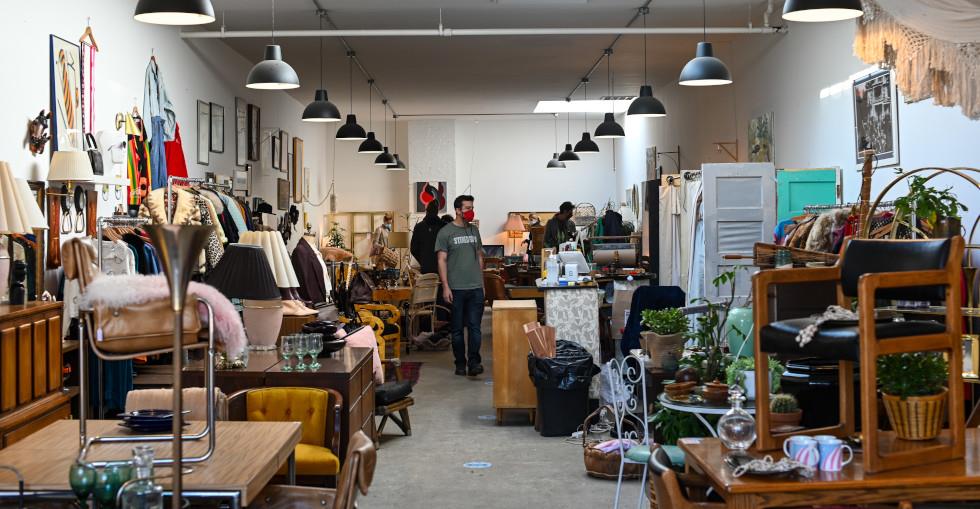Furnishing a space - whether its home or work - will always be a consumer need, so it is unsurprising that furniture manufacturing is a significant industry.
In 2018, consumer expenditure on furniture reached approximately £17 billion, so owning, manufacturing or buying a furniture business can be a lucrative experience if you prepare and manage it correctly.
Taking steps to improve your brand
You might manufacture furniture for the household market, contract furnishings (bars, hotels, and other public venues), or office furnishing.
The domestic market is the biggest, accounting for over 70% of sales, followed by the contract and office furniture sectors, which account for approximately 30% of total sales.
No matter what segment you specialise in, producing high-quality products through skilled workmanship, and introducing new ranges of products regularly will set the tone for your success. Likewise, providing fabric variations or customisation options can add a personal touch to the process and ensure that customers get precisely what they want.
Additionally, your showroom and displays can have a significant impact on the way customers perceive your brand.
Oftentimes, customers are unaware of what they desire until they see it. By designing visually appealing displays and engaging areas in-store for your items, you can assist your customers in visualising them in their homes.
Learn from your competitors
Consumers like different things: contemporary, gothic, sustainable and eco-friendly, artistic, simple. Different products and trends are constantly flowing through this market, so it's essential that you refine your niche.
Take a look at Green Woods Furniture, a Bristol-based contemporary furniture retailer. The business offers handcrafted furniture, beds, and organic mattresses created in the United Kingdom.
They employ environmentally and ethically sourced materials and can manufacture any size, shape, or combination, as well as custom designs. Additionally, they may provide furniture with natural, eco-friendly coatings for people seeking an alternative to traditional industrial finishes, as well as furniture that is glue-free.
A quick glance at the industry
- The furniture market is expected to increase by 2.00% annually, and the bedroom, living room and kitchen and dining are the most popular sectors
- In February 2021, Furniture Village, the UK's biggest independent furniture company, debuted Virtual Village, a new 3D virtual showroom. Consumers are able to experience a new way of visualising what they might buy, whilst receiving support by phone, live chat or a video call.
- The UK is the second biggest furniture market in Europe, with Germany coming first
Attracting new customers
While your window displays, outdoor signage, prices and brand will assist in attracting footfall, you will need to accelerate other ways to attract your customers.
- Consumers are more inclined to shop online now, so investing resources in an app or online store should be your next move
- Increase your market presence by developing innovative products and technological advancements
- Extend your reach by offering your products on Etsy, Amazon and other e-commerce platforms
- Allow customers to publicly review your products, so other new customers can make informed decisions
- Conceptualise new ways to set yourself apart from other competitors (for example, have a section of antique collectables that customers won’t be able to find easily)
- Consider including delivery options if you haven’t already
- Offer discounts for bulk purchases, or a first-time buyer discount
- Consider tapping in to new market segments if you have the resources and personnel to do it
Rising cost considerations
It is critical that the gap between the cost of manufacturing the furniture and selling it is sufficient to pay all of your running expenses and to make a profit.
Increasing material and fuel costs will be a challenge. If you are a small company that designs, manufactures and sells its own products, you need to keep these rising costs in mind, as they will fluctuate according to market conditions.
Likewise, if you are experiencing a dwindling cash flow or you need support to kickstart new projects, there are financing options available.
The final decision – selling your furniture business
If you decide to sell your furniture business, you’ll need to ensure that your valuation provides as much information as possible.
Furniture businesses include multiple asset-based value drivers, including inventory, product development, manufacturing logistics, customer base, brand recognition and other variables. When conducting your valuation, ensure that you account for these elements, and that you achieve a pragmatic valuation that does not undersell (or oversell) your business.
Furthermore, it is always important to negotiate a business value when selling it. Before you exit the business, understand your business the way a buyer would. How will your business model fit with the buyer’s strategy? How can you make your business more appealing to gain negotiation leverage?
Of course, selling a business can be a challenging task if you are not prepared for it, so ensure that you have a strong advisory team to guide you through the process.

